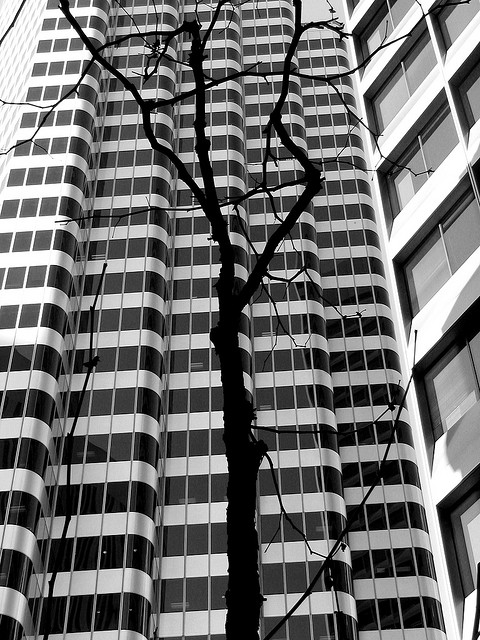Photo by Arvind K/Creative Commons
Most people who have woken up with their same-sex significant other, only to rush back into the closet as they go off to brunch with their family, can relate to the feeling of living two lives. Closeting one identity under the facade of another can lead one to feel mildly isolated at best and completely misunderstood at worst, and the process of shifting identities is always exhausting. However, uniting one’s ‘street’ and ‘sheet’ identities can feel validating and soothing. How exactly can a person fuse the marginalized aspects of their identity with the aspects those around them can understand and relate to? One solution comes from a marginalized community not traditionally associated with the queer spectrum: the community identifying with the title of “urban shaman.”
I interviewed one of my coworkers after learning that she identifies as an urban shaman. Her perspective clued me into the urban shaman community and the ways its associated challenges parallel those facing the queer community.
So, what exactly is a shaman? “To me, an Urban Shaman fulfills the same roles and duties of a Shaman in the Jungles of Peru or the Mountains of the Himalayas, except we shamanize in the concrete jungles of metropolitan communities and sprawling suburbs. Shamans are healers of relationships”. In short, shamans are leaders and healers in their community that work to use their natural strengths to make the world a more loving and unified place.
“Their specialties range from herbalism to exorcism but always they are the healers within their communities. Shamans are the storytellers, the historians, the gatekeepers, the guides, the therapists, the sage ones, the pranksters, the allegorists, the riddlers, the dream weavers…weaving the web of the waking and sleeping dreams, seeking to reveal the connections beyond the obvious to bring unity, love, and healing…usually among a small tribe of about 25 people or so,” Sheri says.
Although identifying with shamanism involves identifying as a healer, and identifying with the queer community involves identifying with an orientation or gender/sexuality label, shamans share some aspects of the queer experience in a literal way. According to Sheri, “shamans are often the queer ones in a tribe. Cross-dressing during ritual, cross-identifying, same-sex relationships….Shamans occupy the in-between spaces of society in every way.”
Also similar to the queer community is the belief that shamanism is relatively fixed. “I could choose to not be an urban shaman but i would still be doing the same things. The title provides order for explaining and describing my craft. Whether it be under the title of cashier, barista, student, or teacher i’m always shamanizing. Always have been, always will be. I feel very lucky to have found a way to focus and engage my energies and gifts.” Despite shamanism being an invisible identifier (in the same way that queerness is relatively invisible), it does not change and is definitely not a phase.
However, unlike queerness, according to Sheri, shamanism can be modified and developed over time. “For me the shamanism is my craft. it is an extension of who i am and thoroughly defines the course of my days and years, but it is only a label for the culmination of many gifts, talents, and passions colliding with the destiny of participating in the arc of infinite history…”
And these gifts and talents do take work to cultivate over time. When asked if she puts work into maintaining her shaman skills, Sheri responded with a resounding “Yes and yes! Always studying, always updating, upgrading, downloading, seeking, learning, sharpening my skills….and at the same time being still and going with the flow, listening to my heart, trusting my instincts and being the most of myself I can be each day. Both must occur to remain active and receptive.” In the same way that one must continually reevaluate and redefine one’s queerness to remain true to one’s identity in a genuine way, shamans must be careful to maintain and refine their skills.
Given the unique nature of the urban shaman identity, it is not surprising that many urban shamans feel misunderstood by their families. As Sheri bluntly puts it, “My Christian family members think I’m doing the work of the devil.” However, having a shaman in one’s life may be more tolerable when one can reap the benefits of their healing powers. “My friends are extremely supportive probably because they’ve benefitted most from my work over the years.”
Despite difficulties coming out and being accepted as a shaman, many shamans find solace in the shaman community. Surprising as it may be, shamans are everywhere! “In fact, there are more urban shamans out there than one might think! They simply use titles like massage therapist, acupuncturist, yoga instructor, psychic…the healing community is huge in Los Angeles.”
However, even with a strong and supportive community of shamans, there are still moments when identifying as a shaman can be isolating. What is the best way to feel validated in one’s identity? According to Sheri, it is a strong and independent sense of self. “First and foremost, I am my own and only authority, i am the source of all things and all the answers are inside of me. Also, I stand on the shoulders of giants, and seek guidance and training from the giants in my life. And I allow the hundreds of encounters that I have each day to teach me, I observe the world around me and allow animals and clouds and trees to speak into my life.”

